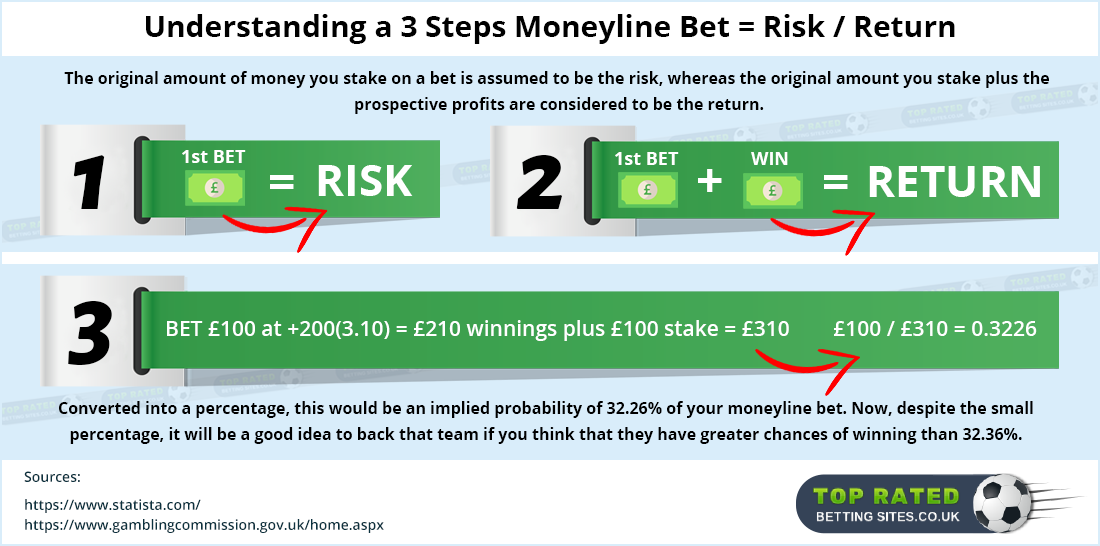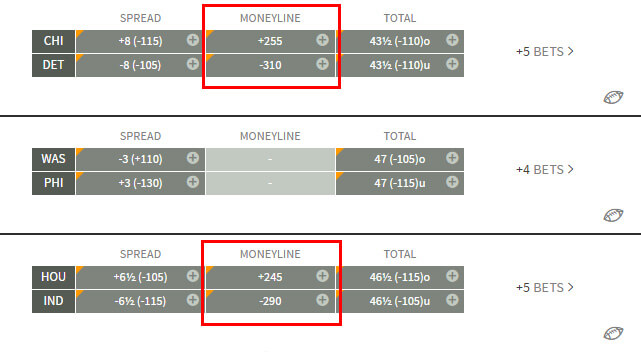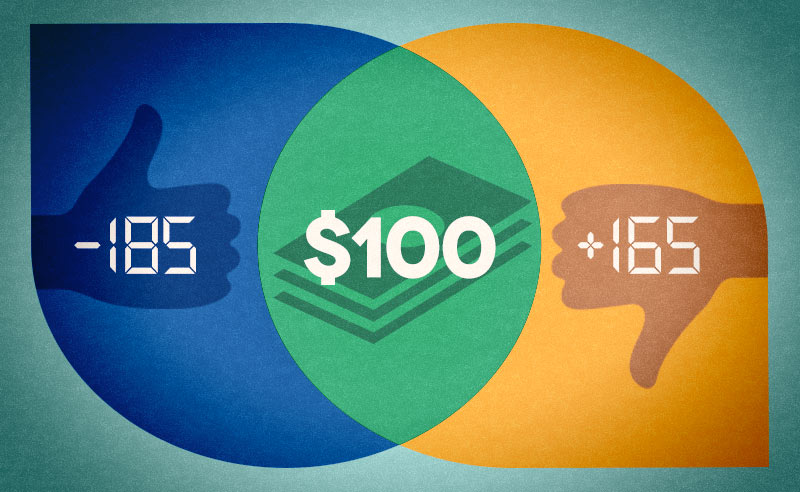- What Does It Mean To Bet The Moneyline
- What Does It Mean To Bet The Moneyline Meaning
- What Does It Mean To Bet The Moneyline

What does the idiom 'Safe bet' mean? Discover the definition of 'Safe bet' in our extensive dictionary of English idioms and idiomatic expressions. While I don't profess to be an English major, I have always been fascinated by our language. I find words and grammar interesting and I like to know. ✅✅✅ Correct answers: 2 🔴 question: What does this is a value which is much greater than, or much less than, the other values. It is important because it can affect your measures of central tendency. What Does Moneyline Mean In Sports Betting and Wagering? Definition and Examples by Expert Handicappers at Docsports.com.


When you apply for a carloan, there’s a lot more to that lenders take into account that just your credit score and history. They will look as factors like your annual income, your outgoing debt, the value of the vehicle that you’re buying, and the loan amount that you’re looking to borrow. When considering those last two factors, the lender will take the loan-to-value ratio into account and determine if they want to lend you the money. But what is the loan-to-value ratio and why is it important?
What is the loan-to-value ratio?
The definition of the loan-to-value (LTV) ratio is pretty simple: It’s the number that lenders use to determine how much risk they are taking on by loaning you the money that you requested. More specifically, the ratio measures the relationship between the loan amount and the market value of the car that you’re buying. For a simple example: If you’re planning to purchase a car worth $100,000 and your loan amount is $90,000, then your LTV would be 90 percent.
Obviously, the lower the percentage, the better. If the LTV is less than 100 percent, then you owe less on the loan than the car is worth and a lender will be more likely to grant you a loan. All is not lost if the LTV is above 100 percent, however, it can make it harder to get a loan.
RELATED: Getting A Good Auto Loan is Possible Even with Low Credit
When would the LTV ratio be above 100 percent?
Let’s say you’re planning to purchase a car for $20,000, but you need to roll over $5,000 of negative equity from a car that you’re trading in, effectively increasing the loan amount that you need to $25,000. In that case, your LTV would be 125 percent. It’s a high percentage rate, but that doesn’t mean that the lender won’t lend you the money. However, just note that some lenders set a maximum LTV amount (125%, for example) so that you don’t go too far over 100 percent.
If you end up with a high LTV ratio (like 125 percent) and you happen to default on the loan, then the lender will only end up with part of that percentage if and when they repossess the car from you and auction it. As you can see, the lender takes a risk when loaning out more than 100 percent of a car’s value to you.
RELATED: Is It a Good Idea to Pay Off Your Car Loan Early?
What Does It Mean To Bet The Moneyline

How do you decrease the LTV ratio?

The most common way to decrease the LTV percentage would be to put an additional down payment on the car that you’re buying. To use the example that Tresl uses: Let’s say you’re buying a $15,000 car, but you need to roll over $2,000 from the car you’re trading in and you also want to buy $500 worth of service protection products (like an extended warranty, for example). You will then need to borrow $17,500, which is an LTV amount of 116 percent. But what if the lender has an LTV cap of 110 percent?
What Does It Mean To Bet The Moneyline Meaning
In order to lower your percentage, you can put additional cash down payment of $1,000, lowering the borrowed amount to $16,500, which will in turn lower the LTV to 110 percent. That’s why the typical rule of thumb is to have at least a 10 to 20 percent down payment when you purchase a car, if possible.